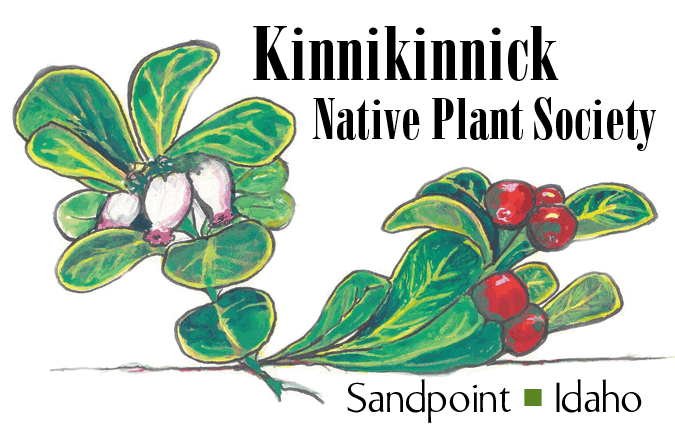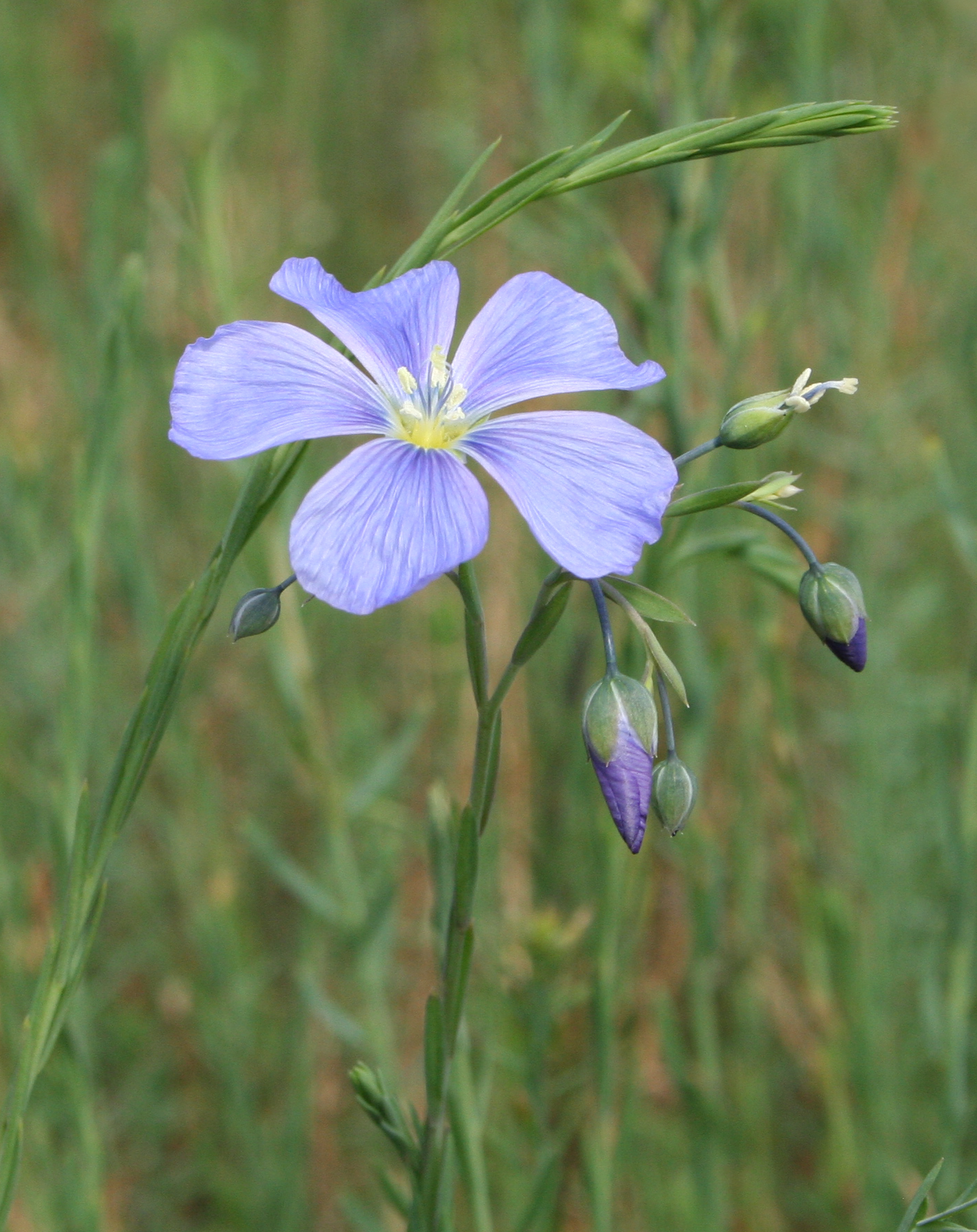Blue Flax
(Linum lewisii)
Blue Flax
Named for Merriweather Lewis and collected in Montana during the Lewis & Clark Expedition, Blue Flax (Linum lewisii) is delightful in mountain meadows and open slopes as well as in the garden. Commonly added to wildflower seed mixes, it blooms from April to August in shades of blue to purple, occasionally white, attracting a large number of native pollinator bees.
Buds hang on thin stalks along the upper end of the stem. They bloom one at a time, unfurling a delicate five-petaled, one-inch blue flower with a center of five yellow pistils and five white-tipped stamens. Flowers open early on a sunny day and last until mid-day. They are replaced the following day with new blooms producing a steady blue haze.
Narrow, needle-like leaves are arranged alternately along slender, flexible, hairless stems which grow from 1-2 feet tall in a dense, vase-shaped clump. Nodding in the breeze, Blue Flax flowers on their graceful, wispy stems provide movement and texture in the garden.
Readily seeding itself, Blue Flax is easy to grow. For best and longest bloom, moderate moisture is preferred, but it is fairly drought-tolerant. This sun-loving native perennial does well in sandy or rocky soils and is a good choice for reclamation projects and disturbed areas as well as in well-drained perennial beds.
In mid- to late-summer, small, shiny, buff-colored fruit capsules appear where the flowers were. When ripe, they split open at the tip presenting 10 wedge-shaped sections with 1-2 dark brown to black seeds each - an important food source for birds.
Various species in the Linum genus have been cultivated for centuries because of their many industrial applications. While our native species is not the one grown commercially, it shares its properties and can be used in the same ways.
The stems make strong durable string, rope, fish nets, and linen cloth after a somewhat detailed “retting” process to separate the useful fibers from the core of the stem. The seeds, rich in omega content, are a popular nutritional supplement for humans and in cattle and chicken feed. It is best to cook seeds before eating as they contain cyanide which is destroyed by heat. Seeds are also pressed for linseed oil for artists, and in the creation and restoration of wooden furniture.
More recent uses of flax fibers include loft insulation, stable bedding and animal litter, non-structural car components such as door panels and mats. Flax dust, a by-product of other flax manufacturing processes is added to briquettes.
Blue Flax grows in the Young Forest habitat in the North Idaho Native Plant Arboretum, 611 S Ella Ave., Sandpoint, ID. It is pictured on page150 of the KNPS publication, Landscaping with Native Plants in the Idaho Panhandle, available at local bookstores and the Bonner County History Museum.
Native Plant Notes are created by the Kinnikinnick Native Plant Society. To learn more about KNPS and the North Idaho Native Plant Arboretum, explore www.nativeplantsociety.org.

